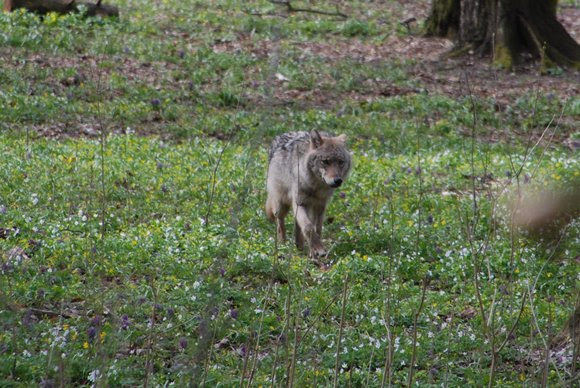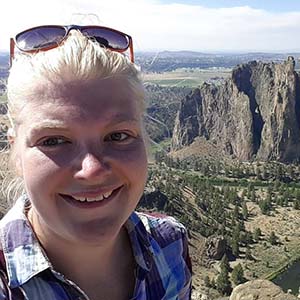Wolves give saplings a chance
Recent research at the University of Groningen in collaboration with the Mammal Research Institute of the Polish Academy of Sciences shows that wolves can have a positive effect on the Dutch landscape. This applies in particular to areas with a large population of deer where saplings hardly get the chance to develop because the seedlings are frequently browsed. The research was published last week in the scientific journal Ecosystems.
The number of wolves visiting the Netherlands has increased in recent years. There even seem to be one or two wolves permanently living in the Northern Netherlands. It’s possible that these wolves have killed sheep, which results in negative reactions to the return of the wolf. Nevertheless, the return also has advantages, research by Prof. Christian Smit, Annelies van Ginkel and Prof. Dries Kuijper has revealed. It’s the landscape that benefits – wolves bring about more variation in the growth of young trees. Wolves create a ‘landscape of fear’, causing their prey, mainly deer, to live in areas with (relatively) safe and unsafe parts. ‘Wolf activity is lower in the safe areas, which reduces the chances of the deer being preyed on by a wolf. These areas are known as low-risk areas’, explains Professor Chris Smit. ‘Wolves avoid people in space and time, resulting in a low-risk area for deer close to human settlements. On the other hand, areas far from human settlements with increased wolf activity are high-risk areas for deer.’

Wolves create a ‘landscape of fear’, causing their prey, mainly deer, to live in areas with (relatively) safe and unsafe parts. ‘Wolf activity is lower in the safe areas, which reduces the chances of the deer being preyed on by a wolf. These areas are known as low-risk areas’, explains Professor Chris Smit. ‘Wolves avoid people in space and time, resulting in a low-risk area for deer close to human settlements. On the other hand, areas far from human settlements with increased wolf activity are high-risk areas for deer.’

Watchful deer
Deer are more watchful in high-risk areas, with the result that they spend less time foraging, also known as browsing. The researchers predicted that the reduced foraging time would mean that young saplings would be browsed less. ‘To research this, we measured the level of browsing on saplings in both high and low-risk areas in the Białowieża forest in Poland’, says UG researcher Annelies van Ginkel, also linked to the Mammal Research Institute. Białowieża is one of the most undisturbed forests in Europe, where you can still find not only wolves and lynxes but also the European bison, moose, red deer, roe deer and wild boar.

‘In areas close to people and settlements we found lots of traces of browsing, and the amount declined further away from the settlement.Those areas were where the wolf activity increased.’ On a smaller scale, deer are more watchful around fallen trees with trunks of about 1 metre tall and a length of over 12 metres . ‘Our results show that when such trees fall in low-risk areas, the browsing declines by 20% for a 4 metre circumference, while in high-risk areas browsing declines by 38% and that in a circumference of 16 metres around the fallen tree.’
More diverse woodlands
Wolves thus have a positive effect by indirectly protecting saplings from the high browsing pressure of deer, especially when linked to fallen trees. Saplings thus have a greater chance of maturing into adult trees. This results in woods with more diversity, a type of ecosystem that is highly valued by nature conservationists. ‘We still need to be careful and not raise expectations about the effect of the wolf on the Dutch landscape’, says Van Ginkel. In Białowieża human activity has strongly affected the wolf, and that influence will most likely be even greater in the highly populated Netherlands. Van Ginkel: ‘Nevertheless, the wolf will on a small scale make a valuable contribution to the Dutch landscape.’
More news
-
15 September 2025
Successful visit to the UG by Rector of Institut Teknologi Bandung
